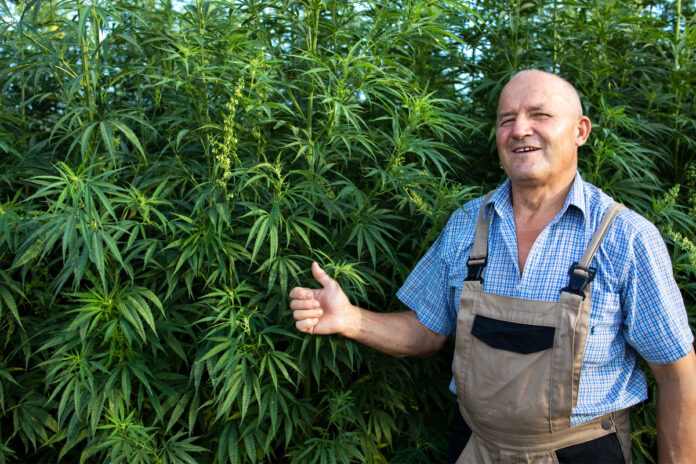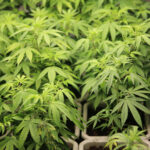The term “organic” is federally protected, meaning it can be used on a label only after strict guidelines are met and maintained. But because cannabis grown for THC remains illegal at the federal level, organically grown marijuana cannot be certified organic (although cannabis grown for industrial hemp can be certified organic). Biodynamic cultivation—a practice that starts with organic methods as a baseline—provides an alternative to outdoor growers who want to offer their customers a certified cannabis product.
Biodynamic production is a whole-farm approach to sustainability in which each element of a farm benefits the others. Under the biodynamic technique, a farm is meant to be a closed-loop system with minimal external inputs. The philosophy posits a farm can provide itself with what it needs through careful holistic management.
While cannabis cultivators are not allowed to be certified organic through the U.S. Department of Agriculture (USDA), they can be certified biodynamic through the Demeter Association. Certification assures consumers and business partners the cultivator is following established production guidelines.
In order to meet Demeter standards, a farm must meet all the basic requirements of organic certification through the USDA’s National Organic Program. In addition, Demeter-certified biodynamic farms must undergo a rigorous analysis of the farm’s self-sufficiency. It’s not an easy process. SPARC’s farm in the heart of Sonoma Valley, California, earned Demeter biodynamic certification in 2018 following three years of transition from organic practices.
The main tenet of biodynamic farming is soil health. For several generations, U.S. farm systems trended toward monocropping, where a farm is devoted to just one crop. Monocropping strips the soil of nutrients and microbes the crop uses and can assist the spread of pests and diseases. Conventional farmers use synthetic fertilizers and chemical pesticides and fungicides to combat those issues, which can have the unwanted side effect of killing beneficial insects and microbes in the soil. This depletes the soil’s natural health even further while potentially introducing chemicals to water systems.
Rather than using additives, biodynamic farms develop soil fertility through practices such as crop rotation and cover cropping and by applying amendments derived on the farm. Biodynamic farming prohibits leaving fields bare year-round as this can cause soil erosion. Instead, farmers plant some form of green cover on all fields. The same crop cannot be planted in the same field in subsequent years to prevent the soil from being stripped. The combination of cover cropping and crop rotation aids in restoring soil health. Additionally, biodynamic farms use nine specific preparations made from herbs, minerals, and animal manure in field sprays and as soil inoculants. The preparations are meant to enhance soil health, root development, and photosynthetic activity.
The idea behind biodynamic cultivation is to keep inputs locally sourced and work with the land as much as possible. At SPARC, crop rotations are critical. During the off season, we grow a cover crop and then bring through cows, sheep, and goats to graze, using their manure as fertilizer for the next cannabis crop. All the green waste created by the livestock goes into compost. It’s a constant cycle, working in sync with the land.
Some people may perceive this as mystical, but one aspect of SPARC’s biodynamic approach is to bury steer horns. The farm team packs the horns with fresh green manure and then buries them in the soil for about a year. It’s actually science, not witchcraft. The horns and manure break down the microbes and bacteria in the soil. That soil is then integrated into the cannabis fields, where it reintroduces native bacteria to the plants. Regardless how people perceive the operation, the plants love it.
Rotational and cover cropping practices work in concert with other methods to promote plant health. Insects, diseases, and weeds can be suppressed through farm management. For example, proper spacing between cannabis plants reduces the presence and spread of mold by giving plants enough air circulation and light penetration to prevent mold and enough distance to limit spread.
Some pests and insects can be beaten by deploying beneficial insects instead of chemicals. Weeds are treated, in part, by companion planting, which bolsters soil health to prevent weeds from taking root, and by manually removing weeds as they arise.
According to biodynamic principles, disease, and weeds signal something is out of balance. Biological controls—such as approved pesticides—may be used, but the biodynamic response is to figure out what caused the imbalance and correct the underlying cause instead.
A final benefit of biodynamic production: All biodynamic cannabis is sun-grown. Not only does cultivating outdoors eliminate one of the most significant costs of indoor production—lights—but it also takes advantage of the full spectrum of sunlight. Indoor production tries to replicate full-spectrum sunlight, but no modern technology offers that ability. Full-spectrum sunlight elicits the full spectrum of terpenes in the finished flower.
Growing biodynamically requires a tremendous amount of oversight from the cultivator. And because plants may be treated differently from year to year based on several external factors—weather, insect and weed biological cycles, etc.—the cannabis produced on a biodynamic farm may vary between plants and across years. Inconsistency is a primary challenge with biodynamic cannabis, as product consistency is a key aspect of attracting and retaining consumers. This also makes biodynamic cultivation less attractive for medical products.
Despite challenges, the “clean” nature of biodynamic flower appeals to consumers concerned about the environmental and personal health impacts of traditional cultivation. That customer psychographic group may continue to grow as cannabis consumers become increasingly educated about cultivation and the positive impact of sustainable farming methods.

SPARC founder and Chief Executive Officer Erich Pearson has been a cannabis activist and legislative consultant for twenty years. He is a founding member of the National Cannabis Industry Association and a benefactor for Maitri AIDS Hospice. In addition to operating several dispensaries in the San Francisco Bay Area, SPARC owns and operates the largest biodynamic cannabis farm in California.











